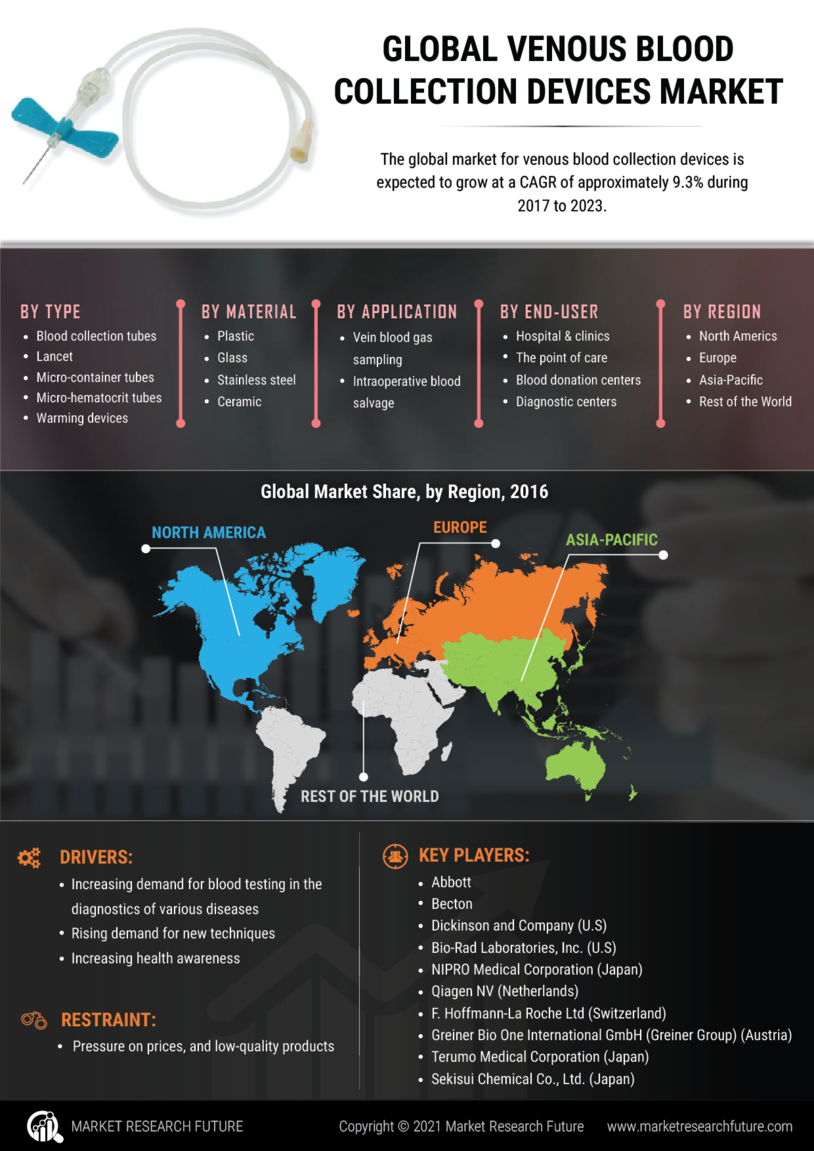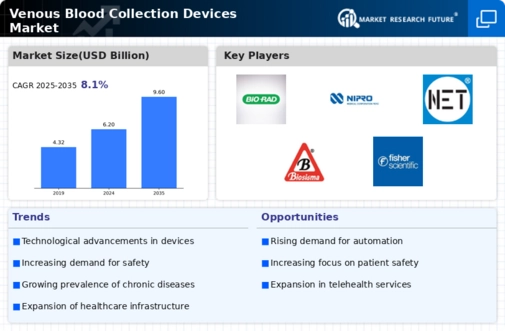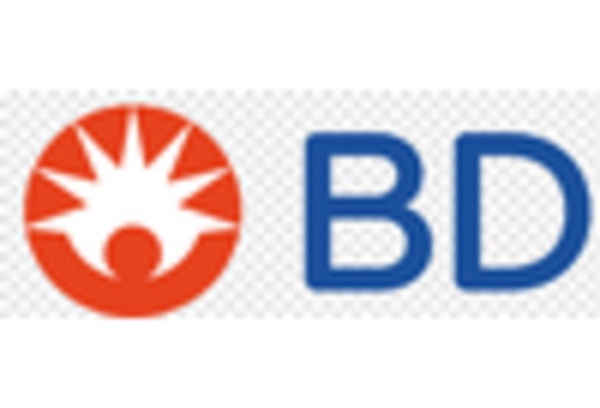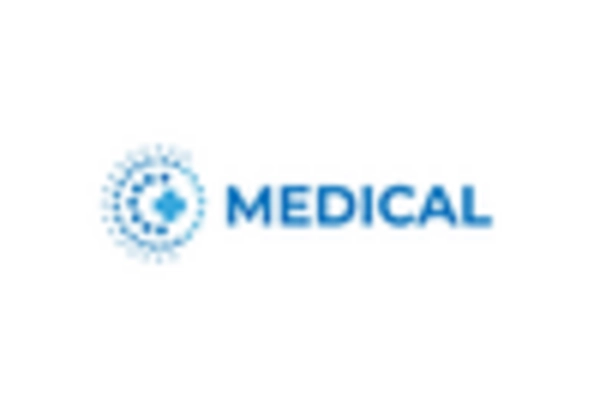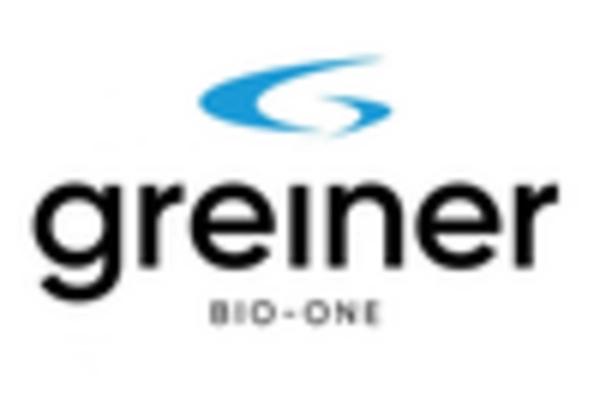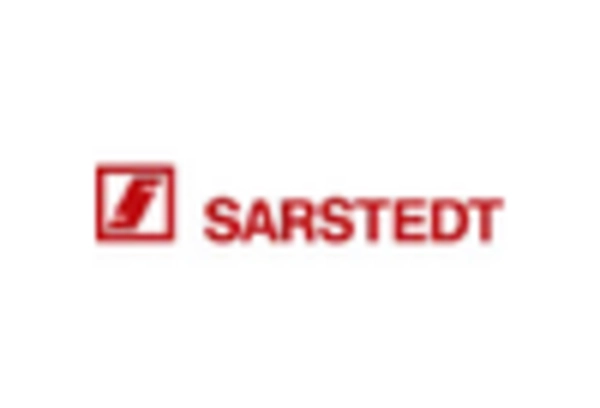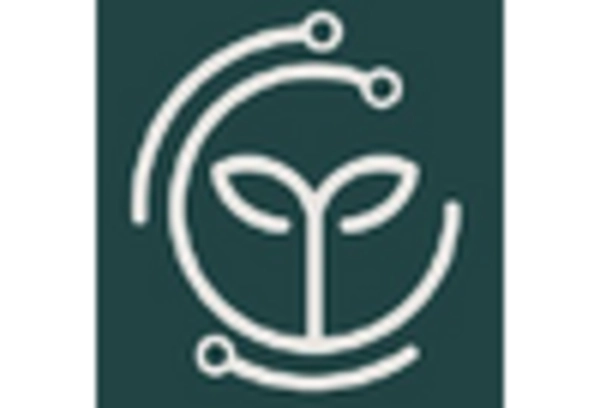Rising Incidence of Chronic Diseases
The Venous Blood Collection Devices Market is significantly influenced by the rising incidence of chronic diseases, which necessitate regular blood testing and monitoring. Conditions such as diabetes, cardiovascular diseases, and cancer require frequent blood samples for effective management and treatment. This trend is expected to drive the demand for venous blood collection devices, as healthcare providers seek efficient and reliable methods for obtaining blood samples. According to recent statistics, the prevalence of chronic diseases is on the rise, with millions of individuals requiring ongoing medical attention. Consequently, the Venous Blood Collection Devices Market is poised for growth as healthcare systems adapt to meet the increasing demand for diagnostic testing and patient monitoring.
Expansion of Healthcare Infrastructure
The Venous Blood Collection Devices Market is poised for growth due to the expansion of healthcare infrastructure in various regions. As healthcare facilities increase in number and capacity, the demand for efficient blood collection methods rises correspondingly. New hospitals, clinics, and diagnostic centers are being established, particularly in emerging markets, which creates a need for reliable venous blood collection devices. This expansion is not only driven by population growth but also by the increasing focus on improving healthcare access and quality. Consequently, the Venous Blood Collection Devices Market is likely to see a boost in demand as healthcare providers seek to equip their facilities with the necessary tools for effective patient care.
Regulatory Support and Standardization
The Venous Blood Collection Devices Market is also influenced by regulatory support and standardization initiatives aimed at improving the safety and efficacy of blood collection practices. Regulatory bodies are increasingly establishing guidelines that promote the use of safety-engineered devices, which are designed to minimize risks associated with blood collection. This regulatory environment encourages manufacturers to innovate and comply with safety standards, thereby enhancing the overall quality of products available in the market. As a result, healthcare facilities are more likely to adopt these devices, leading to a potential increase in market share for compliant manufacturers. The emphasis on regulatory support is likely to shape the future landscape of the Venous Blood Collection Devices Market.
Growing Awareness of Preventive Healthcare
The Venous Blood Collection Devices Market is benefiting from a growing awareness of preventive healthcare among the population. As individuals become more proactive about their health, there is an increasing demand for regular health check-ups and diagnostic tests. This shift in consumer behavior is leading to a higher utilization of venous blood collection devices, as they are essential for various diagnostic procedures. Healthcare providers are responding to this trend by offering more comprehensive testing services, which in turn drives the demand for these devices. The market is likely to expand as preventive healthcare becomes a priority, highlighting the role of venous blood collection devices in facilitating early detection and management of health issues.
Technological Innovations in Venous Blood Collection Devices
The Venous Blood Collection Devices Market is experiencing a surge in technological innovations that enhance the efficiency and safety of blood collection procedures. Advanced materials and designs are being integrated into devices, leading to improved patient comfort and reduced risk of complications. For instance, the introduction of safety-engineered devices has been shown to decrease needlestick injuries, which is a critical concern in healthcare settings. Furthermore, the market is projected to grow at a compound annual growth rate of approximately 6% over the next few years, driven by these innovations. As healthcare providers increasingly adopt these advanced devices, the overall quality of patient care is likely to improve, thereby reinforcing the importance of technological advancements in the Venous Blood Collection Devices Market.
